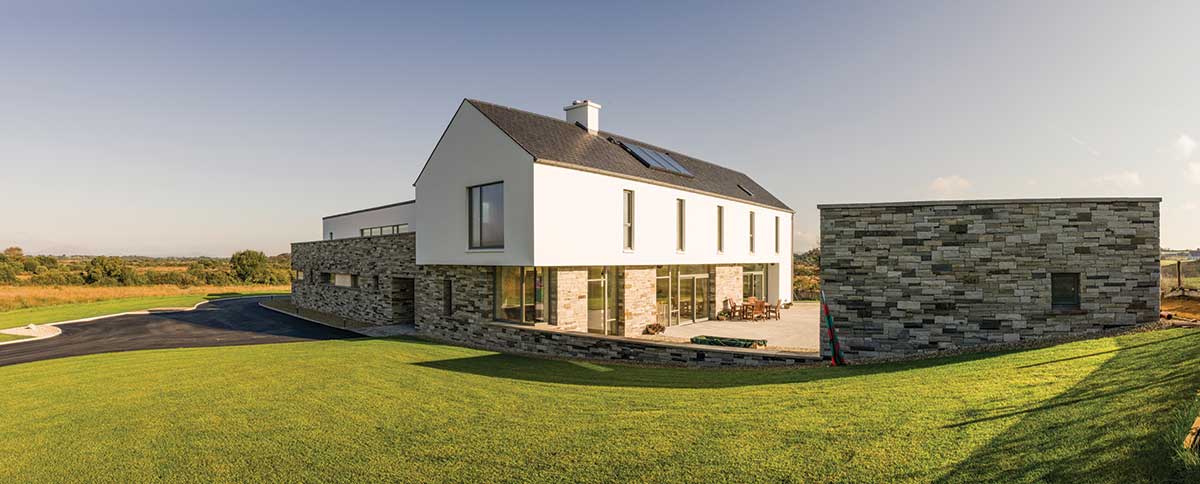If you want to build a stone house make sure you familiarise yourself with some basic concepts before you get started.
Many people who decide to build a stone house have been inspired by the look of a property they know or have seen somewhere. However, in my experience you should not choose the stone for your project based on looks alone! Consider for instance whether you want to clad your home or actually build it out of stone. If stone is still your preferred choice here are some basic tips to take into account.Tip 1: Draw up a bill of quantities
One of the main reasons why people decide to manage their building project is to control cost. Among the first essential steps is to have a Bill of Quantities (BOQ) drawn up. A BOQ is a document that lists all the relevant quantities and types of materials and labour required to complete a specific project from start to finish. The reason for creating a BOQ is so that you can approach various suppliers of materials and/or services and compare them on a like for like basis. So, when you have a BOQ completed and the cost received from the various suppliers, you can then figure out how much you can realistically allocate to your stonework. With building stone materials varying in price from £20/€25 to £100/€120 conservatively per square metre, it is essential that you chose a stone that you can afford. Also, stone merchants generally offer keener prices when presented with a BOQ as opposed to just being asked to price from a set of plans. Having a BOQ generally indicates you are on top of your game and that you will be getting quotes from various competitors, this process generally makes suppliers sharpen their pencils!Tip 2: Choose the correct stone before the foundations are in
Once you have the budget set start shopping around for your stone, making sure the stone you’re looking at complies with the building regulations (ask the supplier for a certificate). You will need to do this before the foundations are dug – the main reason for this is that depending on the type, stone depth from back to front (known as ‘bed width’) can vary greatly. For example some stone comes with a bed width of 100mm, while other stone is only available in 300mm bed widths. When setting your foundations, having these measurements is essential so that correct calculations can be made. If you can, it’s wise to choose your window cills and door surrounds early too as this adds a lot to the aesthetics. If this is planned early in the project it speeds up construction – if you leave it too late to pick out your preferred option, you could hold up the schedule as materials can take time to arrive on site.Tip 3: Discolouration can happen, so be prepared
I have come across some beautiful yellow-coloured stone that has turned almost completely black after just a couple of years. This is extremely disheartening for the homeowner who is left mystified as to why this happened. One thing to bear in mind is that freshly quarried/guillotined stone will not have been exposed to the natural weathering process, and could change colour within a few years. This colour change can really affect the aesthetics of your new home and the emerging shades may not complement the colour scheme you have used for your windows, doors, and roof and in some cases rendered areas. To avoid these problems, you should ask your potential supplier if the stone tends to change colour after it has been built. Find out if there are any buildings that have been built for a number of years, then go visit these properties and view the stone and see how it has changed over time due to weathering and general exposure to the atmosphere. If possible, view a small range of homes that vary in age, just to see what effect time has had on the colour of the stone. Remember also that you should try to ensure the same stone mason has worked on the houses you visit as workmanship has an impact on the finished product too. Although this is not always the case, as a general rule, the harder the stone is, the less likely it is to discolour. Generally, too, softer stone absorbs more water therefore will stain and discolour over much shorter periods of time. Hard stone does not tend to do this as much. That said, in some cases, stone can be more aesthetically pleasing as time and exposure to the elements gradually change the original colour. Discolouration often occurs because some types of stone contain ‘leaky ore’. Even when iron ore is not part of its composition, some stone can turn brown or black with exposure to oxygen, water, snow and frost.Tip 4: Specify the right mortar
Choosing the correct mortar for your project is as important as choosing the right stone. You may assume that your builder or designer (architect, structural engineer) is qualified to select this for you however this is not always the case. In fact many professionals still specify the less desirable cement mortar, which can often lead to problems. Ideally the mortar used for your masonry walls should, when fully set, be softer than the stone, and the same type and strength of mortar used to build the stone should also be used for all masonry walls throughout your build (including block and /or brickwork) except your foundations. These will most likely require a stronger mortar to accommodate any ground movement that may occur due to an alteration in the water table, or freeze-thaw action in soil. It is important to note that using different mortar strengths throughout a building generally can cause the masonry walls to crack and potentially cause structural problems, as the various strengths of mortar tend to settle and shift at different rates. This is because they have different expansion and settling traits and tolerances. A softer bonding mortar such as Natural Hydraulic Lime (NHL) mortar is generally better suited to stone than standard cement because it’s able to ‘breathe’: it can absorb water and allow it to evaporate freely, drawing moisture away from the masonry units (e.g. from wind driven rain). This means the stone can dry out quickly and not be continually saturated with water, helping prevent damage caused by water getting trapped, freezing then thawing and causing damage in the process. In general mortar should be viewed as part of a much broader system, which is as much about keeping masonry units apart and acting as a drainage system, as it is about bonding them together. Buildings built on this principle tend to have much greater longevity.Tip 5: Think DPC
Damp is often a problem with stone buildings, even newly constructed ones. The most common reason is the incorrect installation of the Damp Proof Coursing (DPC) around doors, windows and chimneys. The DPC cannot be applied on stone as it would on a standard block or brick finished house. Oftentimes poorly detailed drawings do not inform the block layer where exactly and how the DPC should be fitted, leading to problems down the line. This is specialist work and requires careful detailing. Thomas Fitzpatrick is the author of The Insider’s Guide to Stone House Building, a set of guidelines aimed at those who want to project manage their house building project or simply want to make more informed and confident decisions when employing professionals. There are a total of 10 guidelines, and the first is offered free of charge on www.castlefortconsultants.com with the option of purchasing the remaining 9 in PDF Downloadable format for $25. The guidelines are also available for purchase on Amazon (£2.55 per guide, full set $25, print version £49). Additional Information Michael McMonagle of McMonagle Stone, Co Donegal and Co Dublin, tel. 074 9735061/ 01 8079079, www.mcmonaglestone.com[adrotate group="4"]
[adrotate group="3"]




One Comment